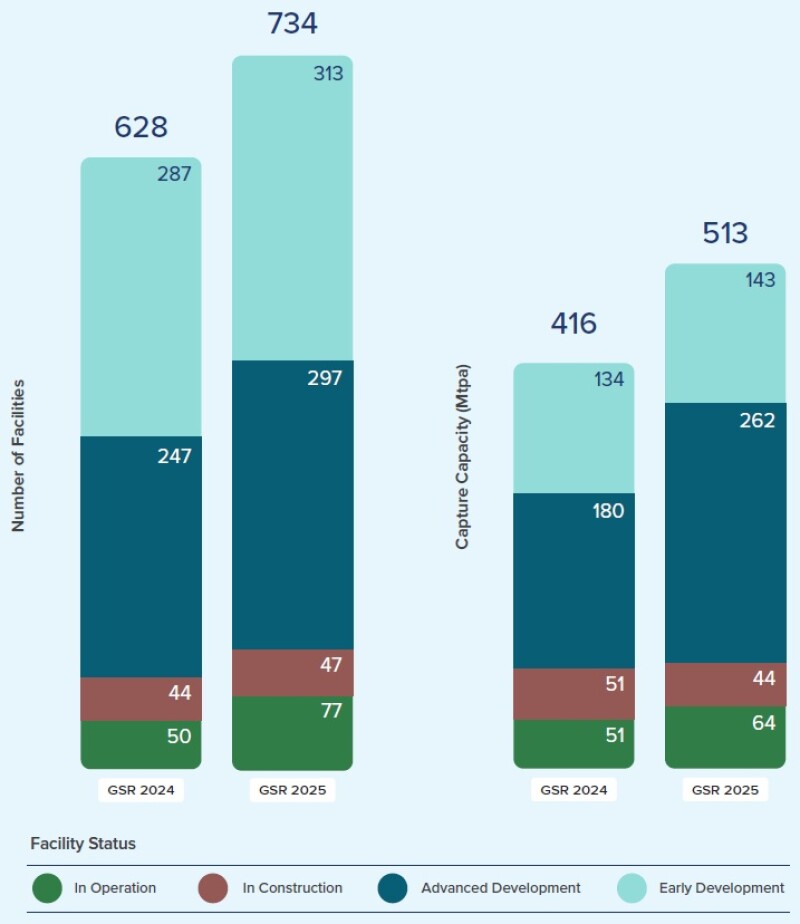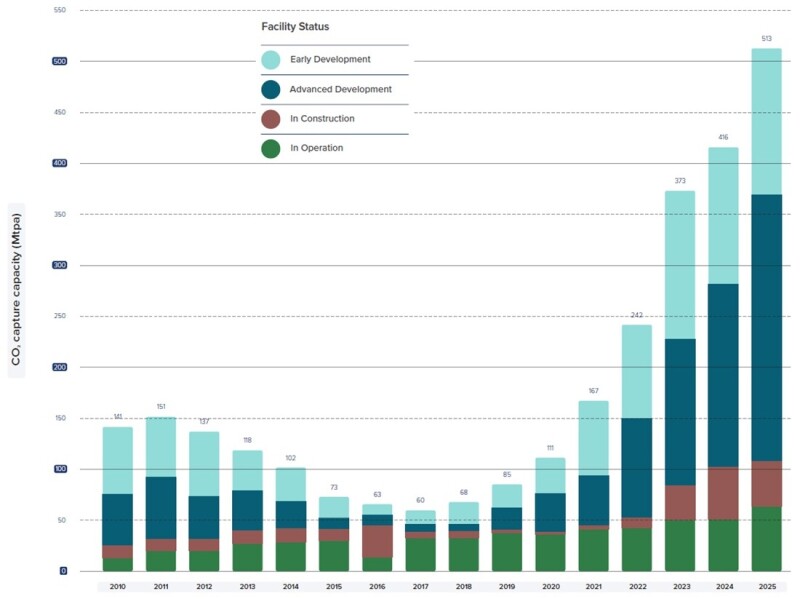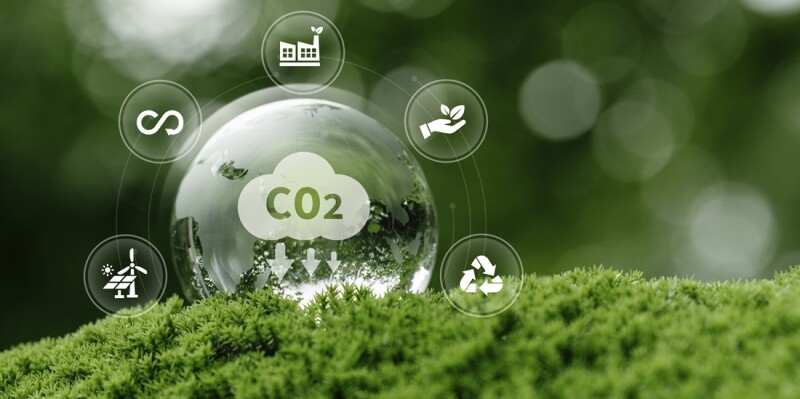The Global CCS Institute has released its annual report detailing the global state of carbon capture and storage (CCS), and the trend appears to be toward growth.
The institute noted in its Global Status of CCS 2025 report that the number of operating CCS facilities has grown to 77 from 50 a year ago (Fig. 1). These facilities have the capability of storing 64 mtpa. The report points to an addition 44 mtpa of capacity that is currently under construction, signaling a potential increase in operating capacity of 70% in the coming years.
“Global momentum is also reflected in infrastructure growth,” said Jarad Daniels, the institute’s CEO, in the report. “Dedicated CO2 transport and storage projects are increasing—doubling in Europe between 2023 and 2024 alone—laying the foundation for shared CCS networks that improve scalability and reduce costs.”

Pipelines and Storage
The report also notes a significant increase in pipeline and storage capacity, stating that 27 pipeline projects have begun operations and another 30 have begun construction since the report’s 2024 edition. Meanwhile, storage capacity has risen at a compound annual rate of 30% since 2017, according to the report (Fig. 2).
The report projects that capture capacity of facilities in operation globally will be five times higher in 2030 than it is in 2025.

Driving this increase is greater financial maturity in the carbon capture sector and an expansion of carbon capture technology in all industries, led, the report states, by natural gas processing. That lead, however, is projected to be taken by carbon-neutral hydrogen and ammonia generation by 2030.
As an example of the sector’s financial maturity, the report mentions that, for the first time, CCS projects have secured nonrecourse debt financing supported by robust policy frameworks and offtake agreements, citing Net Zero Teesside and the Northern Endurance Partnership.
“This milestone reflects growing lender confidence, aided by standardized contracts, emerging insurance
solutions, and dedicated project finance structures,” the report says.
Driven by Policy
Daniels said that capacity growth around the world is connected to regional policy. The report specifically points to an increase in policy initiatives in Europe, Asia, and the Middle East. In the Americas, the report mentions Canada and Brazil extending initiatives and showing support for CCS. This year, Brazil will be the host country for COP30, the 30th Conference of the Parties to the United Nations Framework Convention on Climate Change. Brazil is the first host country with a national CCS law, an operating direct air capture plant, and a project nearing CO2 injection for pure geological storage.
In the US, policy shifts have led to uncertainty, Daniels said, adding that the 45Q tax credit continues to be an important driver and continues to receive bipartisan support.
While the US federal government has backed out of the UN Framework Convention on Climate Change and is actively rolling back climate policies of the previous presidential administration, the report points out that 12 states have enacted 24 pieces of CCS legislation.
“When states proactively pass legislation, they send positive signals to industry about their regulatory readiness for CCS projects, which could attract AI data centers and other industries to their states, further stimulating economic growth,” the report states.
In addition to regional policy shift, the report also highlights cross-border considerations. Recent proposed changes to the 2009 transboundary amendment to the London Protocol highlights the importance of addressing the movement of CO2 across international borders from its origin sites to storage sites.
“In parallel,” the report says, “several governments across Europe and the Asia Pacific are continuing to develop policy and regulatory frameworks, as well as formal agreements between nations, that will underpin these transboundary value chains and ensure their climate mitigation potential is formally recognized.”

